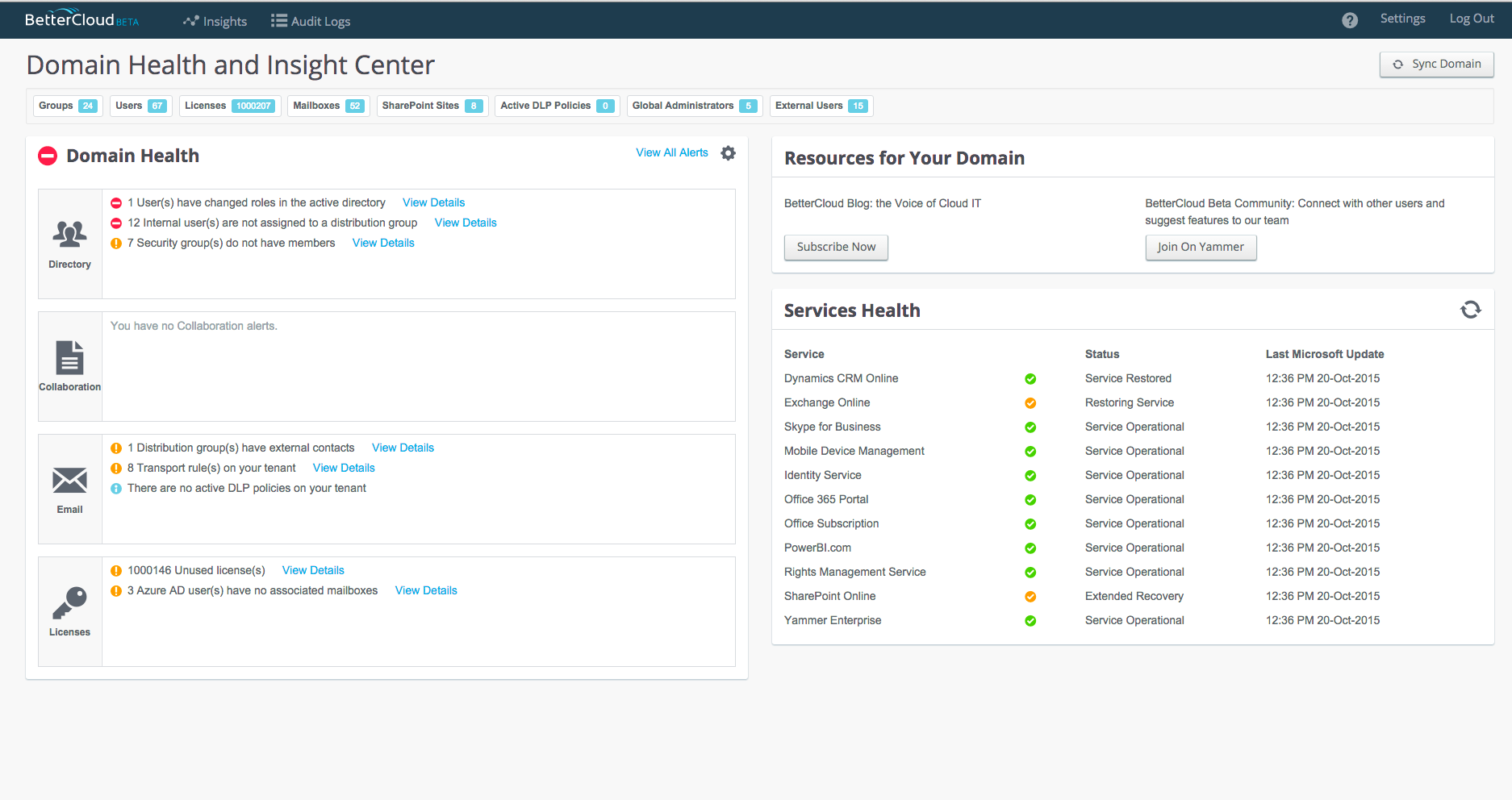Monitor Your Office 365 Service Health with BetterCloud
October 22, 2015
2 minute read

Rarely will you find an IT manager without a server uptime horror story to tell.
Exchange or SharePoint servers going down unexpectedly, perhaps in the middle of the night with no one on site to fix the issue; or even worse, in the middle of a busy workday when hundreds of workers that rely on the services IT delivers to do their jobs. Managing server uptime is too often the bane of IT departments.
As any organization leveraging the cloud office knows, one of its biggest benefits is the relief it gives IT as they no longer need to manage their IT infrastructure. Offloading the ongoing maintenance of hardware to cloud office systems like Office 365 is a boon to millions of organizations leveraging the cloud office.
Both Microsoft and Google are backed by SLAs of 99.9% or higher, and Microsoft has taken it a step further by publishing its worldwide quarterly uptimes on the Office 365 Trust Center–and even given administrators a view into the availability of their specific tenant through the Office 365 Admin portal. There is an extremely high standard that IT organizations do and should hold them to.
But in talking with hundreds of customers during our BetterCloud for Office 365 beta, we’ve learned that IT needs more. Our customers requested visibility into when their systems went down from within BetterCloud.
As part of the Microsoft Management Activity API Preview program, we are proud to announce that BetterCloud is the first Microsoft Partner to have built on the Office 365 Services Communication API, giving our customers near real-time visibility into when their Office 365 services are interrupted.
Key features include:
- View the Services Health for your Office 365 tenant through the BetterCloud application. Reported states include: “Available, Interrupted, Degraded, Restoring, and No Information Available.”
- Granular visibility into your Office 365 health by workload.
These new features may seem like a small enhancement to what is available to IT through Microsoft’s native tools, but it’s another example of our commitment to putting our customers’ voice first, and giving them the tools to more readily adopt cloud systems like Office 365.
No longer does IT need to wait for their end users to notify them that they are experiencing an issue. By leveraging BetterCloud for Office 365, they can proactively monitor the health of their Office 365 environment, whether they are sitting at their desk or out in the field supporting remote users.
BetterCloud for Office 365 is currently in public beta. You can install BetterCloud for Office 365 here, or request a demo with one of our product experts here.







